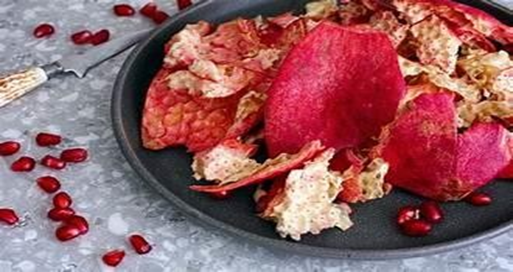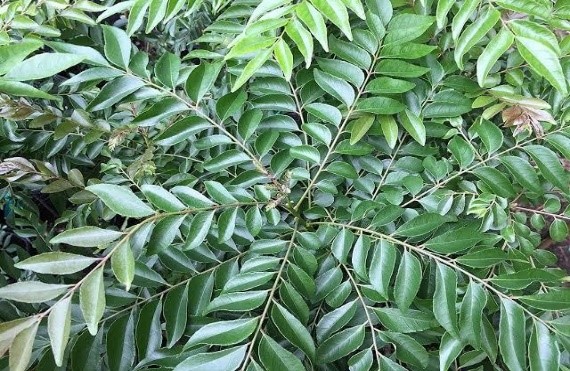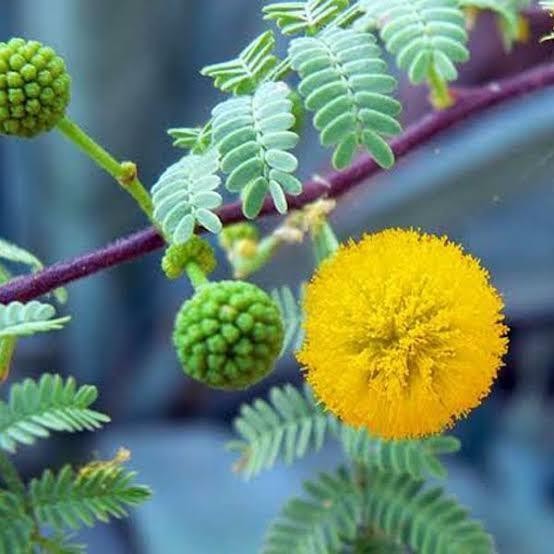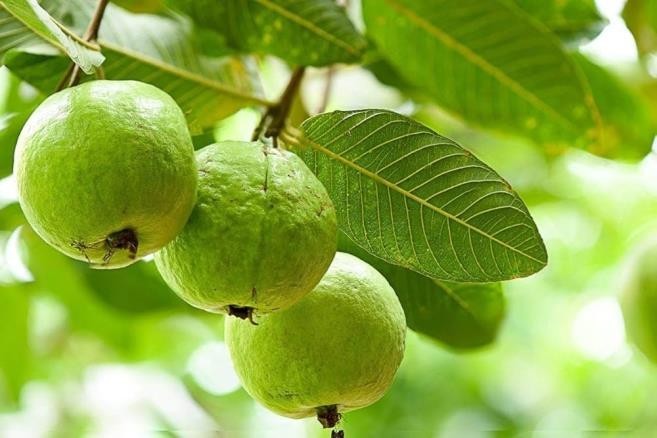One of the most common oral health problems in the world is dental caries, which makes the creation of alternative treatment modalities necessary. The goal of this study is to develop and test a new herbal chewable tablet that uses the antimicrobial and anti-cariogenic qualities of Psidium guajava (guava leaves), Murraya koenigii (curry leaves), Acacia catechu (black catechu), and Punica granatum (pomegranate peel) to treat dental caries. The chewable tablet was created using these herbs, which are well-known for their antibacterial, antioxidant, and remineralization properties, along with calcium carbonate as a remineralizing agent. Pre-compression and post-compression parameters, such as weight variation, hardness, friability, and disintegration time, were assessed for the tablets. Significant inhibitory action against Lactobacillus acidophilus and Streptococcus mutans, two important bacteria in dental caries, was shown in antimicrobial investigations. Studies on enamel remineralization and biofilm inhibition showed how effective the herbal mixture was at reducing plaque and increasing enamel hardness. The results suggest that the developed herbal chewable tablet offers a promising, natural alternative for the management of dental caries, combining antimicrobial activity and remineralization effects. This study provides a foundation for further in vivo investigations and commercialization of the formulation as an affordable and accessible oral care solution.
Dental caries, Murraya koenigii, Acacia catechu, Punica granatum, Psidium guajava
One of the most frequent chronic illnesses in the globe, dental caries affects a large percentage of people. Although fluoride-based caries prevention treatments have been used extensively, their long-term effectiveness and possible negative outcomes have led to the investigation of alternative natural solutions. Herbal formulations have gained popularity due to their antimicrobial, anti-inflammatory, and remineralizing properties. This research focuses on developing a novel herbal chewable tablet combining Murraya koenigii (curry leaves), Acacia catechu (black catechu), Punica granatum (pomegranate peel), and Psidium guajava (guava leaves). These plants are known for their bioactive compounds that inhibit oral pathogens and promote oral health. The goal is to formulate an effective chewable tablet that can serve as a natural alternative for caries prevention and oral care management. One of the most chronic oral disorders, dental caries, is mostly brought on by Streptococcus mutans. Since it affects people of all ages and causes moderate to severe pain, swelling, infection, and tooth structural loss, dentists are quite concerned about it.
MATERIAL:
Pomegranate Peel Extract (Punica granatum):
A member of the Punicaceae family, Punica granatum, also referred to as pomegranate, has a long history of use as a medicinal fruit. Punica, the genus name, was taken from the Roman name for Carthage.
Apple ("pomum") and seeded ("granatus") are the definitions of the words "pomegranate." Although the pomegranate is indigenous to the Himalayas, which stretch from northern India to Iran, it has been grown across the Mediterranean region, tropical Africa, California, and Arizona. The compounds polyphenols, tannins, ellagic acid, and anthocyanins found in pomegranates are thought to be potent antioxidants. Anthocyanidins, the red pigments found in fruits, have antioxidant properties. The tannins found in pomegranates, punicalagins, punicalin, strictinin A, and granitin B reduce the formation of nitric oxide and the expression of inflammatory cytokines. Pomegranates have been shown to promote gum health, bolster teeth, and stop teeth from coming loose. Phenolic chemicals can cause membrane proteins to precipitate and limit enzyme activity, which kills bacteria. Staphylococcus aureus and hemorrhagic Escherichia coli can be treated with punicalagin, ellagitannin, ellagic acid, and gallic acid.
Punica granatum, or pomegranate, has long been celebrated for its health benefits, including its potent antioxidant, anti-inflammatory, and antimicrobial effects. The peel of the pomegranate fruit is rich in tannins, flavonoids, and alkaloids, which have shown significant antibacterial activity against oral pathogens such as Streptococcus mutants. Pomegranate peel extract has also been found to enhance enamel remineralization and prevent plaque accumulation, making it a valuable component in the treatment of dental caries.

Figure 1. Pomegranate peels
Curry Leaves (Murraya koenigii):
In Indian traditional medicine, the Murraya koenigii plant is used extensively as a herb, spice, and condiment in addition to being used to treat a variety of illnesses. Approximately 80% of the world's population depends on herbal products due to their perceived safety, effectiveness, and affordability. The goal of the current study was to review the Murraya koenigii plant's pharmacological, phytochemical, pharmacogenetic, and ethion botanical characteristics. Many indigenous communities make extensive use of this plant's many parts. The plant's leaves are used internally for vomiting and dysentery, as well as as a tonic, stomachic, and carminative. used as an analgesic, an anthelminthic, a piles remedy, and to relieve body heat, thirst, inflammation, and irritation. Researchers have tried to confirm the plant's effectiveness by rigorous biological screening after it was claimed to cure a wide range of illnesses.
Curry leaves, or Murraya koenigii, are a plant indigenous to the Indian subcontinent. Because of its antibacterial, antioxidant, and anti-inflammatory qualities, it has been utilized in traditional medicine. Curry leaves contain alkaloids and essential oils that have been demonstrated in studies to suppress the growth of cariogenic bacteria, including *Streptococcus mutans*, a major pathogen implicated in the formation of dental caries. Additionally, curry leaves have shown potential in reducing inflammation in oral tissues.

Figure 2. Murraya koenigii
Acacia catechu Extract:
Historically, the herb Khadir (Acacia catechu) has been significant due to its therapeutic qualities. It is a member of the Fabaceae and Mimosoideae families. The word "acacia," which means "point" in Greek, is the source of its genus name. The term 'cutch,' which refers to a tanning extract that is extracted from the heartwood, is where the species name comes from. Five Balapatra (small leaves), vakrakanta (because of hooked spines), dantadhavana (good for teeth), kantha (good for throat), kusthaghna (anti-dermatosis), and many other synonyms are used for this plant in Ayurveda. In Sanskrit, the word "khadir" denotes "that which stabilizes the body and diseases." Known by another name, Katha is a typical component of pan, a betel leaf mixture that is chewed after meals in India.
Complex disorders of the gingiva and the tissues that support teeth, periodontal diseases are characterized by the inflammatory destruction of these tissues brought on by microbes. If left untreated, they may progress to significant damage to soft tissues, bone resorption, and ultimately, tooth loss.3 As our knowledge of multi-cause etiology and pathophysiology grows, so does the concept of therapeutic patterns. The use of antibiotics as a supplement to mechanical therapy has captured the interest of physicians in recent. Acacia catechu, commonly known as black catechu, is an evergreen tree native to Southeast Asia. It has been used in folk medicine for its astringent and antimicrobial properties. The active compounds in Acacia catechu, such as tannins and flavonoids, are effective in reducing bacterial growth and plaque formation in the mouth. Studies have shown that Acacia catechu extracts can significantly inhibit the growth of Streptococcus mutants and Lactobacillus. acidophilus, two key bacteria responsible for tooth decay.

Figure 3. Acacia catechu
Guava leaves extract (Psidium guajava)
Guava, or Psidium guajava, is a phytotherapeutic plant with antibacterial, antiparasitic, hepatoprotective, antioxidant, antigenotoxic, antimutagenic, antiallergic, anticancer, and antihyperglycemic properties. It has been found that the antibacterial activity of L. acidophilus, a cariogenic bacterium, is comparable to that of chlorhexidine. Because of its long-standing antiviral, antifungal, and antibacterial qualities, Psidium guajava has been utilized as medicine since ancient times. It has been proposed that allicin resistance develops 1,000 times more slowly than it does for some antibiotics. There is little research on P. guajava's impact on periodontal infections, despite the fact that it is a naturally occurring plant with antibacterial properties. Therefore, the purpose of the study was to assess the effectiveness of garlic and guava extracts as antimicrobial agents against periodontal infections, primarily Gingivalis Porphyromonas. Psidium guajava, or guava, is a tropical fruit with a wide array of medicinal properties. The leaves of the guava plant contain flavonoids, tannins, and other bioactive compounds that have demonstrated antibacterial and anti-inflammatory effects. Guava leaf extracts have been shown to inhibit the growth of Streptococcus mutans and Lactobacillus acidophilus, thereby reducing the incidence of dental caries. Guava leaf extract also possesses astringent properties, which help in tightening the gums and preventing gingivitis.

Figure 4. Psidium guajava
Review of literature:
Tooth decay, also known as dental caries, is one of the most common chronic diseases in the world and affects people of all ages. The World Health Organization (WHO) reports that dental caries affects between 60 and 90 percent of school-age children and many adults globally. The condition arises when acids generated by oral bacteria erode the tooth's enamel, which is its hard outer covering. These bacteria mostly consume sugar, which causes them to produce acids that demineralize enamel and cause cavities.
Current treatments for dental caries include restorative procedures such as fillings, crowns, and root canals. Preventive methods often involve the use of fluoride-based products like toothpaste and mouthwashes, which help remineralize the enamel and inhibit bacterial growth. However, fluoride treatments have been met with growing concerns over potential toxicity with overuse and the development of fluoride resistance in certain bacterial strains. Additionally, the widespread use of fluoride has led to concerns about its environmental impact. The limitations of current treatment options have spurred interest in alternative, natural remedies, such as herbal medicine, for preventing and treating dental caries. Herbal medicines have long been used for their therapeutic properties and are seen as a promising solution for managing dental health issues in a more sustainable and natural manner.
- Role of Herbal Medicine in Dentistry
For ages, traditional medical systems like Ayurveda and Traditional Chinese Medicine have used herbal medicines in tooth care. It has been demonstrated that plants with bioactive chemicals have antibacterial, anti-inflammatory, and antioxidant qualities that are advantageous for dental health. Flavonoids, tannins, alkaloids, and terpenoids—compounds known to suppress the growth of oral infections, lower inflammation, and encourage remineralization—are found in many herbal remedies. In the context of dental caries, herbal medicines have gained attention for their ability to not only combat the harmful bacteria that cause cavities but also for their potential to remineralize and protect tooth enamel. Research in the past decade has revealed that natural products like plant extracts can help in preventing caries and promoting overall oral hygiene, offering a promising alternative to synthetic chemical-based treatments.
- Synergistic Effects of Herbal Combinations
Recent research has emphasized the benefits of combining multiple herbal extracts to maximize their therapeutic effects. In the context of dental caries, combining the antimicrobial properties of Murraya koenigii, Acacia catechu, Punica granatum, and Psidium guajava offer a multi-faceted approach to both preventing the formation of dental plaque and promoting the remineralization of tooth enamel. The synergistic effects of these herbs could potentially reduce the overall microbial load in the oral cavity while enhancing the tooth's resistance to decay. Combining herbal ingredients with proven antibacterial properties, such as those found in the herbs discussed above, creates a more effective formulation that can provide both antimicrobial action and enamel remineralization, addressing the core issues associated with dental caries in a natural and holistic manner.
METHODS:
- Plant collection and identification:
The selected crude plant materials that are Punica granatum (peel) and Psidium guajava (leaves)
Murraya koenigii (leaves) and Acacia catechu extract were collected.
-
- Pomegranate (Peels):
The powder was extracted for 36 hours using distilled water. After that, a water bath was used to concentrate the water-based extract. A semisolid, sticky extract was then created.
- Murraya koenigii (leaves):
To extract Murraya koenigii for chewable tablets targeting dental caries, fresh leaves are washed, shade-dried, and ground into a fine powder. For ethanol extraction, 50 g of powder is soaked in 500 mL of 70% ethanol for 48 hours, filtered, and concentrated using a rotary evaporator. Alternatively, for aqueous extraction, the powder is boiled in water, filtered, and concentrated. The extract can be freeze-dried for stability and stored in airtight containers at 4°C. Around 50–100 mg of extract can be used per tablet, along with natural sweeteners (xylitol) and binders (acacia gum). This ensures that antibacterial and antioxidant compounds like carbazole alkaloids and phenolics are preserved for dental health benefits.
- Acacia Catechu Extract:
To extract Acacia catechu (black catechu), follow these steps: Wash and shade-dry the bark or heartwood, then grind it into a fine powder. For ethanol extraction, soak 50 g of powder in 500 mL of 70% ethanol for 48 hours, filter, and concentrate using a rotary evaporator at 40°C. For aqueous extraction, boil 50 g of powder in 500 mL of distilled water for 1 hour, cool, filter, and concentrate. The extract can be freeze-dried for stability and stored in airtight containers at 4°C to retain tannins and catechins for antimicrobial and antioxidant benefits.
- Psidium guajava (leaves):
To extract Psidium guajava (guava leaves), wash and shade-dry the leaves, then grind them into a fine powder. For ethanol extraction, soak 50 g of powder in 500 mL of 70% ethanol for 48 hours, filter, and concentrate using a rotary evaporator at 40°C. For aqueous extraction, boil 50 g of powder in 500 mL of distilled water for 1 hour, cool, filter, and concentrate. The extract can be freeze-dried for stability and stored in airtight containers at 4°C to preserve antibacterial and antioxidant compounds like flavonoids, tannins, and guajavins.
Other than extract, material used for preparation of tablets was:
Table 1: Excipient used in tablet


 Ujjwal Khairnar*
Ujjwal Khairnar*




 10.5281/zenodo.14745684
10.5281/zenodo.14745684